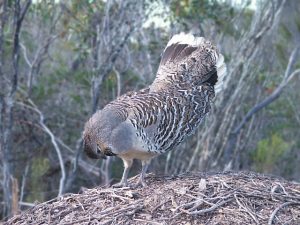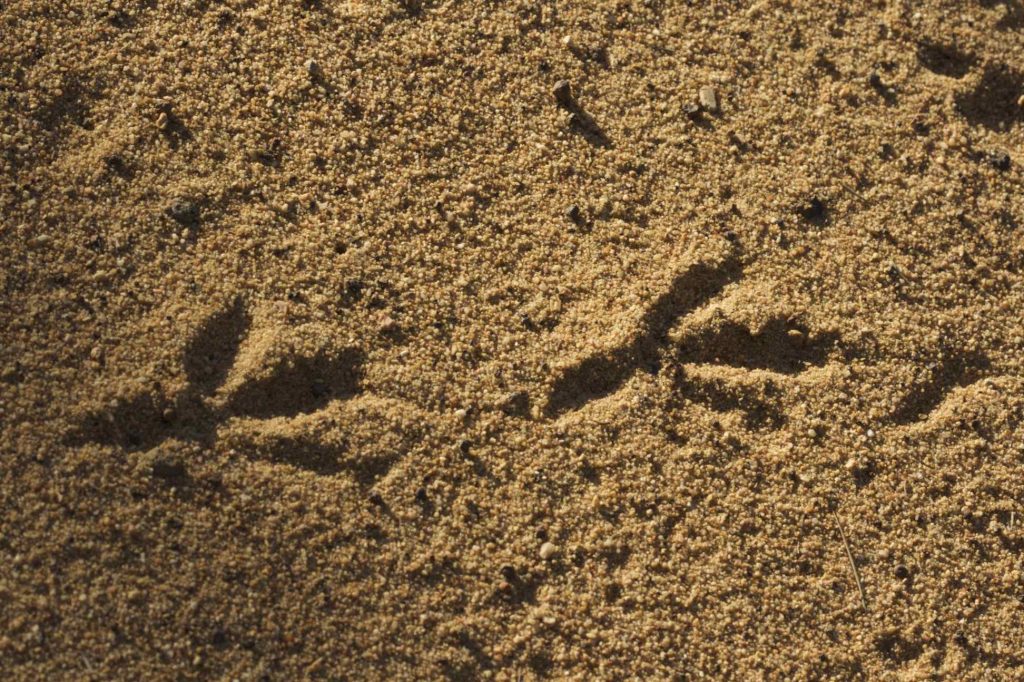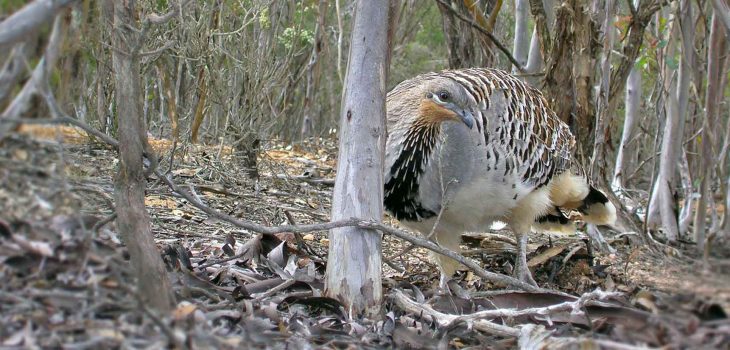- The original distribution of Malleefowl included an area from Shark Bay in WA, across the Nullarbor into SA (with some records from the NT), VIC, NSW, but now their habitat is much declined due to land clearing.
- Loss of habitat, fragmentation of habitat, changed fire & grazing regimes are the main reason for the species becoming rare (loss of habitat is the predominant reason for the decline of most declining species).
- Ideally, Malleefowl need bush land that hasn’t been burnt for at least 10 years.
- Other factors contributing to decline: introduced predators (cats, foxes, pigs), competition for food (rabbits, sheep, goats)
- Natural predators are birds of prey, snakes, goannas
- Chick survival rate in the wild: only 1-2% – i.e. infant mortality rate of up to 99%!
Official Conservation Status
 Commonwealth: Vulnerable (Environment Protection and Biodiversity Conservation Act 1999)
Commonwealth: Vulnerable (Environment Protection and Biodiversity Conservation Act 1999)
Western Australia: Vulnerable (Wildlife Conservation Act 1950) (vulnerable in SA, but endangered VIC, NSW, and critically endangered in NT)
IUCN (International Union for Conservation of Nature): Vulnerable
Estimated Remaining Population Size
It is estimated that there are approximately 95,000 mature Malleefowl remaining in the wild. The trend is declining. The reliability of the number is low, and the likelihood of the trend being accurate is high. (Garnett, Szabo and Dutson (eds). The action plan for Australian Birds 2010).

